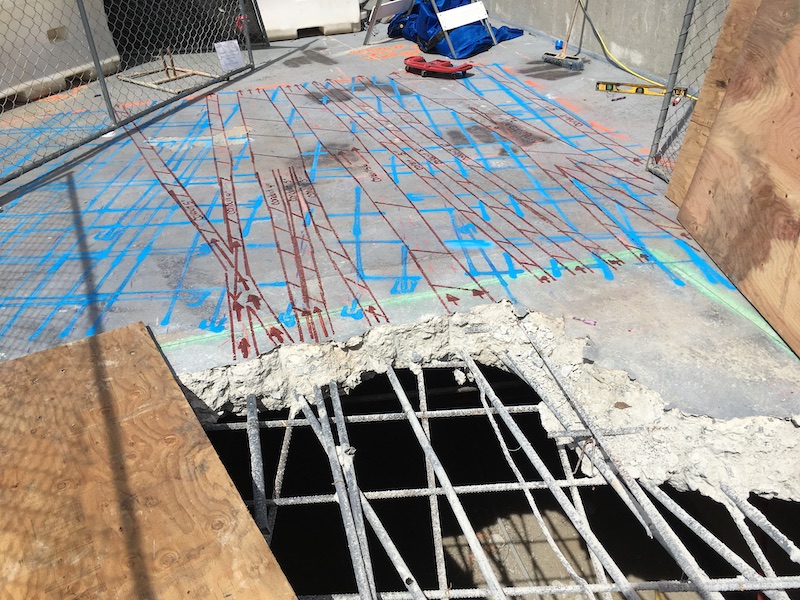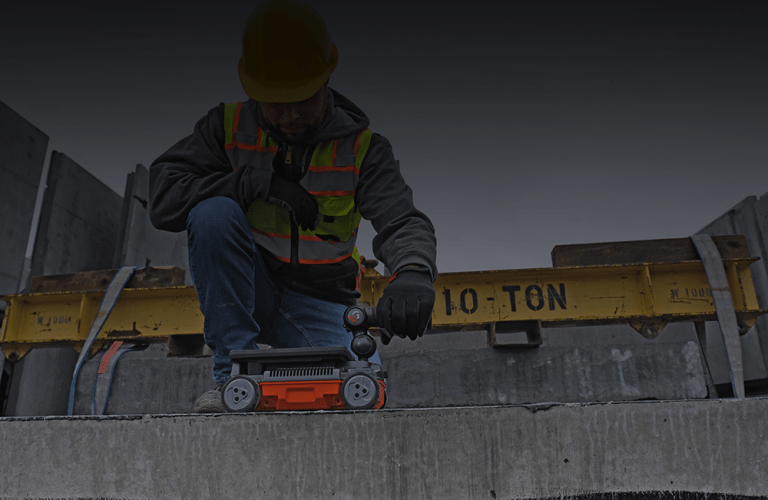The Significance of Precise Concrete Scanning in Detecting Underground Hazards
The capacity to properly identify and map these below ground threats is not simply an issue of convenience but an essential element of ensuring the safety and security of both building employees and the stability of the job itself. By deploying innovative scanning modern technologies and techniques, professionals can uncover concealed dangers, stop costly problems, and inevitably pave the method for smoother and more secure building and construction undertakings.
Advanced Scanning Technologies for Detection
Advanced radar systems are changing the area of underground detection by supplying unequaled precision and efficiency. These innovative scanning innovations use ground-penetrating radar (GPR) to create detailed photos of subsurface structures, using insights right into what exists underneath the surface with amazing quality. By releasing high-frequency pulses into the ground and gauging the reflections, radar systems can recognize variations in product structure and spot underground dangers such as pipes, cords, and spaces.
One of the vital benefits of these advanced radar systems is their non-invasive nature, enabling for detailed examinations without triggering damages to the existing frameworks. This not only makes sure the safety and security of the surrounding atmosphere but likewise decreases the need for costly repair work or interruptions to ongoing building and construction jobs. Additionally, the real-time information supplied by these scanning modern technologies makes it possible for quick decision-making and improves overall project performance.
Value of Subsurface Mapping

Accurate subsurface mapping assists in protecting against pricey damages to existing underground facilities, reducing the danger of accidents, and keeping project timelines. It allows job supervisors to make educated choices pertaining to website planning, devices deployment, and resource appropriation. Furthermore, subsurface mapping enables for much better control among various groups servicing a project and aids in following regulatory demands associated to below ground utility detection.
Mitigating Dangers in Construction Tasks
Efficient risk mitigation strategies are vital for guaranteeing the success and security of building projects. One crucial facet of mitigating risks in construction projects is comprehensive planning and evaluation at the initial phases.
Additionally, developing clear communication channels amongst all task stakeholders and guaranteeing rigorous adherence to safety protocols are important elements of threat reduction. Regular assessments, top quality control actions, and tracking of job progression can aid in determining and dealing with any type of emerging threats promptly. In addition, having contingency plans in location for unexpected difficulties can substantially reduce the effect of disruptions on the job. By proactively executing durable threat reduction techniques, construction projects can reduce visit homepage hold-ups, price overruns, and safety incidents, inevitably causing successful job end results.

Avoiding Pricey Damages and Delays
To reduce financial losses and project setbacks, efficient approaches have to be site here applied to avoid expensive problems and delays in construction tasks. Identifying these obstructions early on aids in intending the job format a lot more efficiently and preventing prospective problems during excavation.
Furthermore, investing in training programs for building and construction workers on the value of concrete scanning and safe excavation techniques can significantly minimize the danger of delays and crashes. Clear interaction channels between task managers, engineers, and on-site employees are additionally crucial to make sure that everybody knows the potential risks and complies with the necessary methods to avoid costly damages. By focusing on proactive procedures like concrete scanning and promoting a culture of safety and security and awareness, building projects can lessen the financial effect of unforeseen underground blockages and stay clear of expensive hold-ups.
Ensuring Safety of On-Site Personnel
By prioritizing aggressive actions such as detailed training programs and clear communication channels, building projects can ensure the safety and security of on-site employees amid the prospective risks identified via concrete scanning. Proper training furnishes employees with the knowledge and skills required to navigate building and construction websites safely, particularly when dangers are determined via scanning processes. Training needs to cover threat acknowledgment, emergency situation procedures, and the appropriate use of individual safety equipment to reduce risks efficiently.
Additionally, developing clear interaction channels is important for sharing information regarding determined hazards promptly. This guarantees that all on-site personnel are mindful of possible dangers and can take essential safety measures to avoid accidents. Regular security rundowns, toolbox talks, and consistent updates regarding scanning results aid keep everybody informed and positive in keeping a secure functioning setting.
Additionally, executing strict adherence to safety and read the full info here security procedures and laws, conducting normal security audits, and cultivating a culture of safety and security awareness among workers are essential parts in ensuring the well-being of on-site workers throughout construction projects - RainierGPR Concrete Scanning. Proactive precaution not only secure employees from injury but also add to the total success and efficiency of the task
Verdict
To conclude, specific concrete scanning plays a crucial duty in discovering below ground dangers. Utilizing sophisticated scanning technologies and subsurface mapping assists minimize risks in construction jobs, preventing expensive problems and hold-ups. By guaranteeing the safety and security of on-site workers, precise scanning can dramatically boost the performance and success of building operations. It is imperative for construction firms to prioritize using accurate scanning techniques to decrease potential hazards and ensure a smooth building process.

By proactively applying durable threat reduction approaches, building tasks can reduce delays, cost overruns, and safety and security incidents, ultimately leading to successful project end results. - RainierGPR Concrete Scanning
To decrease financial losses and job troubles, reliable strategies should be carried out to protect against costly damages and delays in building projects. By focusing on proactive measures like concrete scanning and advertising a society of safety and understanding, building tasks can decrease the economic impact of unexpected underground obstructions and avoid costly delays.
By prioritizing aggressive steps such as extensive training programs and clear interaction channels, building and construction projects can make sure the security of on-site workers in the middle of the prospective risks detected via concrete scanning. Utilizing innovative scanning modern technologies and subsurface mapping helps reduce risks in construction jobs, avoiding expensive damages and delays.